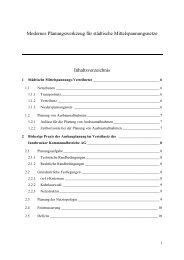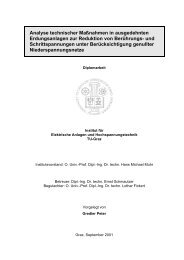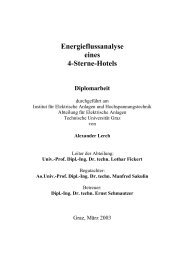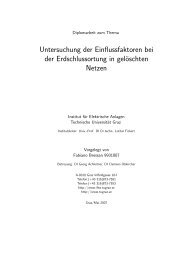Development of a wavelet-based algorithm to detect and determine ...
Development of a wavelet-based algorithm to detect and determine ...
Development of a wavelet-based algorithm to detect and determine ...
You also want an ePaper? Increase the reach of your titles
YUMPU automatically turns print PDFs into web optimized ePapers that Google loves.
6.2. BASIC IDEAS OF THE WAVELET TRANSFORM 47<br />
Calculation <strong>of</strong> the Continuous Wavelet Transform<br />
The calculation <strong>of</strong> the continuous <strong>wavelet</strong> transform is a quite simple process. There<br />
are five steps:<br />
1. Chose a <strong>wavelet</strong> <strong>and</strong> locate it at the start section <strong>of</strong> the original signal.<br />
Figure 6.9: Step 1 <strong>of</strong> the continuous <strong>wavelet</strong> transform<br />
2. Calculate a <strong>wavelet</strong> coefficient according <strong>to</strong> Equation 6.6.<br />
3. Shift the <strong>wavelet</strong> <strong>to</strong> the right <strong>and</strong> repeat step 1 <strong>and</strong> 2 until the whole signal is<br />
covered.<br />
Figure 6.10: Step 3 <strong>of</strong> the continuous <strong>wavelet</strong> trans-<br />
form<br />
4. Scale the <strong>wavelet</strong> <strong>and</strong> repeat step 1 through 3<br />
5. Repeat step 1 through 4 for all scales.<br />
With the help <strong>of</strong> the <strong>wavelet</strong> transform, a one-dimensional signal can be represented<br />
in two-dimensional domain. Figure 6.12 shows, as an example, the <strong>wavelet</strong> domain














